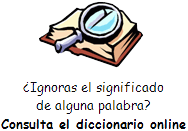 Have
you ever wondered about the differences between the words this, that,
these and those? Have
you ever wondered about the differences between the words this, that,
these and those?
These words are called demonstratives. Demonstratives tell who or what
you are talking about. They are often a source of confusion for English
learners, because other languages use demonstratives in different ways
than English does.
Demonstratives can act as pronouns or as determiners. A pronoun is a
word that is used instead of a noun or noun phrase.
A determiner is a word that comes before a noun and is used to show
which thing is being referred to. In the second sentence of this story,
you heard these as a determiner, when I said “These words are called
demonstratives.”
Pronouns
As pronouns, demonstratives identify or point to nouns.
This points to an object that is near to you in space, thought, or time.
The plural form of this is these.
Here are two examples:
"This (in my hand) is my pen."
"These (people standing near me) are my friends."
That points to an object that is comparatively far from you in space,
thought, or time. The plural form of that is those.
So, for example, you could say
"That (in your hand) is your pen."
"Those (people standing far from me) are my friends."
Demonstratives can serve as a signal for a noun phrase or take the place
of a noun phrase. Here are two examples. In the first example, these
acts as a determiner, while in the second example these acts as a
pronoun.
These old tires and car parts
will be perfect toys for the children.
These will be perfect toys for the children.
Demonstratives in popular music
Demonstratives are common in speech, writing and even popular songs.
For example, in “My Favorite Things,” a song from the famous film “The
Sound of Music,” the singer lists the objects that she loves. In the
last line, she refers to these objects by singing, “These are a few of
my favorite things.”
Raindrops on roses and whiskers on kittens
Bright copper kettles and warm woolen mittens
Brown paper packages tied up with strings
These are a few of my favorite things.
In the song, these refers to raindrops on roses, whiskers on kittens,
kettles, mittens and packages.
Common problems:
Determiners give information about whether a noun is general or specific.
Demonstrative determiners tell you that the noun or noun phrase is
specific.
You use a specific determiner when you know that the person who is
reading your writing or listening to you knows what you are referring to.
In other words, you have a clear antecedent.
In the song “My Favorite Things,” the antecedents are the objects that
the singer lists before she says, “These are a few of my favorite things.”
In the book Rhetorical Grammar, Martha Kolln writes that if you do not
use demonstratives to refer to a clear antecedent, such as a noun phrase,
your writing loses clarity.
Take, for example, the following sentence:
"My friend just told me she is going to quit her job. That came as a
surprise".
The subject of the second sentence -- that -- refers to the whole idea
in the first sentence.
When this or that refers to a broad idea, Kolln writes, you can usually
improve your sentence by turning the pronoun into a determiner. In other
words, you can use a complete noun phrase in place of the demonstrative
pronoun. So, for example, you could improve your sentence by writing:
My friend just told me she is going to quit her job. That decision came
as a surprise.
By adding a noun, such as “decision,” to the sentence, you can make it
easier for your reader to understand what you are referring to.
The next time you are writing or speaking, ask yourself if the
demonstrative that you are using has a clear antecedent. If you have to
think about it, then your reader or listener will probably have a
difficult time understanding what you mean! |
 Sugerencias:
Sugerencias:![]() ). Utiliza el botón derecho del ratón y "guardar enlace" para
descargar el fichero a tu PC, tablet, Smartphone, etc.
). Utiliza el botón derecho del ratón y "guardar enlace" para
descargar el fichero a tu PC, tablet, Smartphone, etc.
![]() Escucha el audio
Escucha el audio
![]() ¿Quieres recibir en tu e-mail gratis y
periódicamente ejercicios, programas gratuitos, explicaciones y otros recursos
para mantener tu inglés sin esfuerzo? Apúntate a nuestro
cuaderno mensual de inglés.
¿Quieres recibir en tu e-mail gratis y
periódicamente ejercicios, programas gratuitos, explicaciones y otros recursos
para mantener tu inglés sin esfuerzo? Apúntate a nuestro
cuaderno mensual de inglés.




